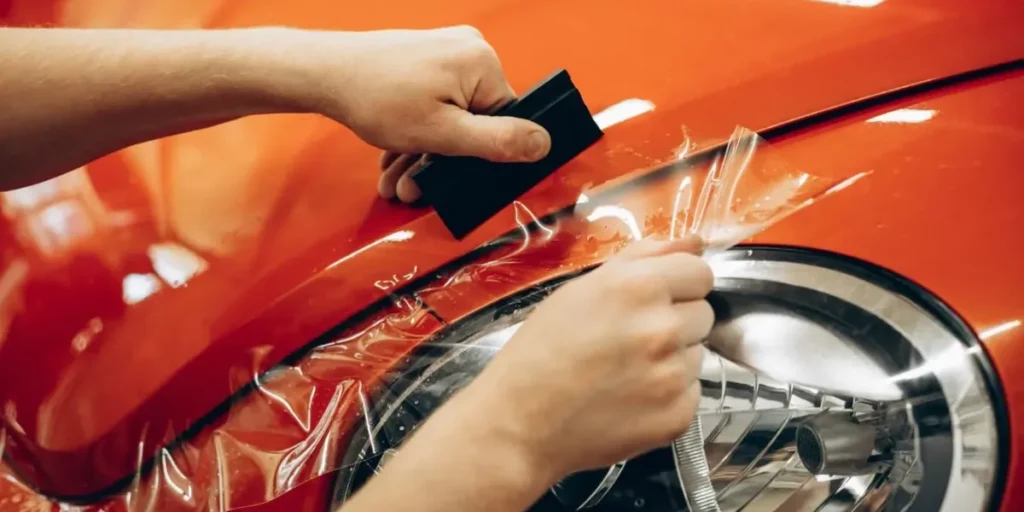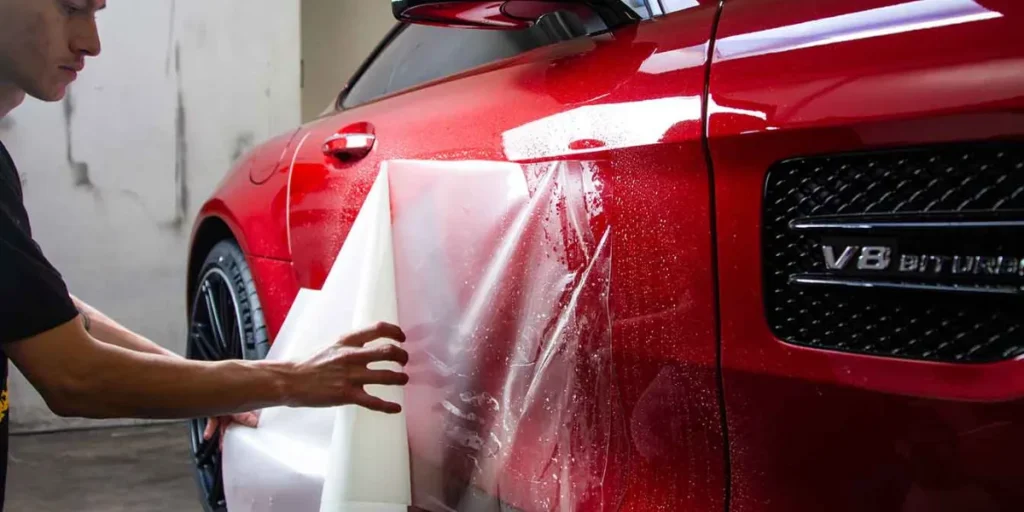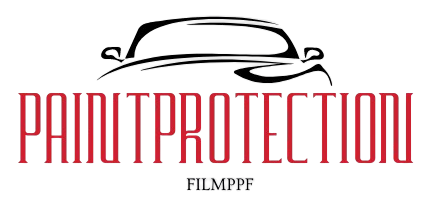If you’ve ever cringed at a rock chip on your car’s hood or noticed those tiny scratches around your door handles, you already know keeping a car’s paint perfect is a never-ending battle. No matter how much you baby your vehicle, life happens. Rocks fly up on the highway, a shopping cart taps your door in a parking lot, or a careless driver parks a little too close.
That’s why so many car owners are turning to paint protection film for cars. It’s not just a fancy add-on anymore — it’s a smart move if you care about keeping your car looking sharp for years.
Paint protection film, often called PPF or clear bra, is basically a tough, transparent shield that hugs your car’s paint. It’s so clear that you barely notice it’s there, but it’s working overtime to save your paint from everyday damage. Good films like XPEL Paint Protection Film are designed to handle everything from stone chips to road tar to bird droppings, all without ruining the look of your vehicle.
One of the coolest things about today’s films? Self-healing technology. That’s right — if you get light scratches or swirls, the film can actually “heal” itself when exposed to a little heat. Park under the sun or pour some warm water, and minor marks just vanish. It feels like magic, but it’s real science.
Where Should You Install Paint Protection Film?
Some people go all-in and wrap their entire vehicle. Others just protect the “high-impact” areas — the parts most likely to get beat up:
- The front bumper (rock magnet)
- Hood and fenders
- Side mirrors
- Door edges (especially if you park in tight places)
- Rear bumper tops (great for SUV owners, always loading stuff)
Honestly, even a partial wrap can make a huge difference.
Is It Really Worth the Investment?
Absolutely. Look — repainting a hood or fixing deep scratches isn’t cheap. Plus, factory paint jobs tend to be better quality than aftermarket ones. Once you mess with the original finish, your car’s value can drop, even if the repair looks good. With PPF, you’re preserving that original factory shine, and when it’s time to sell or trade, buyers notice.
It’s not just about looks either. Protecting your car’s paint is about protecting your investment. And if you’re like most people, your vehicle is one of the biggest purchases you’ll make after your home.

Is Paint Protection Film for Cars Better Than Ceramic Coating?
When you’re trying to protect your car’s paint, it feels like everyone’s throwing big words at you. Paint protection film (PPF), ceramic coating, graphene coating… It’s a lot.
But if you’re standing there, keys in hand, wondering which one’s actually going to save your paint, here’s the honest breakdown — no fluff.
What Paint Protection Film (PPF) Does
PPF is like the tough, invisible armor your car didn’t know it needed.
You get a physical layer — an actual film — that sits on top of your paint and takes the hit whenever a rock flies up, or some clueless person swings their door wide in the parking lot.
It’s thick. It’s flexible. It’s self-healing (yep, little scratches disappear with heat).
And once it’s on, it just does its job quietly without changing how your car looks.
But — good stuff isn’t cheap. A proper PPF install costs real money, and it’s not the kind of thing you want your cousin’s friend to try in their garage.
You need a pro who knows how to wrap every curve and edge like it’s their car.
Check out how PPF compares to ceramic coatings if you’re still weighing your options.
What Ceramic Coating Does
Now, ceramic coating — it’s a different beast.
Think of it like a magic raincoat for your car.
It makes water bead up and roll right off. Dirt doesn’t stick as easily. Washing your car becomes stupidly easy.
But — and here’s the kicker — ceramic coatings don’t stop rock chips.
If a rock’s coming at you at 60 mph, that ceramic isn’t gonna help. It’ll just help you wash the splattered bug off your bumper afterward.
So, it’s great for keeping your car shiny and cleaner for longer, but it’s not real impact protection.
So, What Should You Really Get?
Here’s the no-BS answer:
- If you’re worried about your paint getting scratched, dinged, or chipped, you want paint protection film.
- If you’re mostly after that extra shiny, easier-to-wash look, ceramic coating will do just fine.
And honestly? A lot of folks do both.
They PPF the front (where all the rocks hit), then ceramic coat the whole thing for the shine and easy maintenance.
If you love your car — and you know you’re going to keep it for years — invest in the paint protection film first.
That’s the real armor. Ceramic is like the polish on top.
Quick Real-World Example
My buddy put ceramic coating on his brand-new BMW and skipped PPF to save money.
First week on the highway? Bam. Big ugly rock chip on the hood.
Guess what? Ceramic didn’t stop it. Now he’s paying $700 to repaint and touch-up — and the factory finish will never be the same again.
If he had wrapped that hood, he would’ve just peeled the damaged film and slapped a fresh piece on. No paint damage.
What to Expect When Getting Paint Protection Film Installed
So, you’ve decided to go for paint protection film (PPF).
Smart move.
Now you’re probably wondering — what happens when you bring your car in for PPF?
Let’s break it down so you know exactly what to expect (and how to avoid getting ripped off).
First Things First: Picking the Right Shop
Not every place that says they install PPF actually does it right.
You want a shop that specializes in it, not just someone who also does tint, alarms, rims, and wraps as a side hustle.
Look for a workshop that:
- Works in a dust-free, temperature-controlled environment (dust under film = nightmare)
- Uses quality brands like XPEL Paint Protection Film
- Has photos of their real work, not just stock images
- Offers a warranty on both material and labor
Good installers aren’t cheap, but trust me — it’s way cheaper than fixing a bad install.

The Installation Process (What Happens to Your Car)
Here’s how it usually goes down:
1. Full Paint Decontamination
Your car isn’t just washed — it’s clayed, cleaned, and stripped of any waxes or oils.
The surface has to be 100% pure for the film to bond properly.
2. Custom Pattern or Bulk Install
- Some shops use computer-cut patterns made specifically for your car model.
- Some pros prefer a bulk install, where they hand-cut the film directly on your vehicle for a cleaner, tighter look.
There’s no “one right way,” but bulk installs usually look a little more invisible when done well.
3. Film Application
Using special slip solutions, they carefully lay the film over the panels, stretch it into place, and squeegee out any bubbles or moisture.
It’s slow, tedious work — real pros are like surgeons at this stage.
4. Edge Wrapping
Where possible, they’ll wrap the edges of the film around corners so you don’t see a line.
This is where bad shops cut corners (literally).
5. Final Curing
After installation, your car sits overnight so the film settles and any tiny bubbles evaporate.
How Long Does It Take?
Most basic installs (like a front bumper and hood) take 1 full day.
Full-body wraps can take 3 to 5 days, depending on the vehicle size and how detailed the install is.
How Much Should It Cost?
Prices vary a LOT, but here’s a rough ballpark:
- Partial front (hood, bumper, mirrors): $1,000 – $1,800
- Full front (bumper, hood, fenders, mirrors): $2,000 – $2,800
- Entire car wrap: $4,000 – $8,000+
Quick Tip: Aftercare is Key
For the first 48 hours:
- Don’t wash the car
- Don’t park under trees where sap could fall
- Avoid high-pressure water directly on the edges
After that, treat it like normal, but skip automated car washes with big spinning brushes.
Hand wash is best!
Final Words: It’s an Investment You Won’t Regret
At the end of the day, paint protection film is peace of mind.
You’re spending a little now to save yourself a lot of pain, frustration, and cash down the road.
When you walk up to your car years later and it still looks showroom fresh?
You’ll be glad you made the move.
